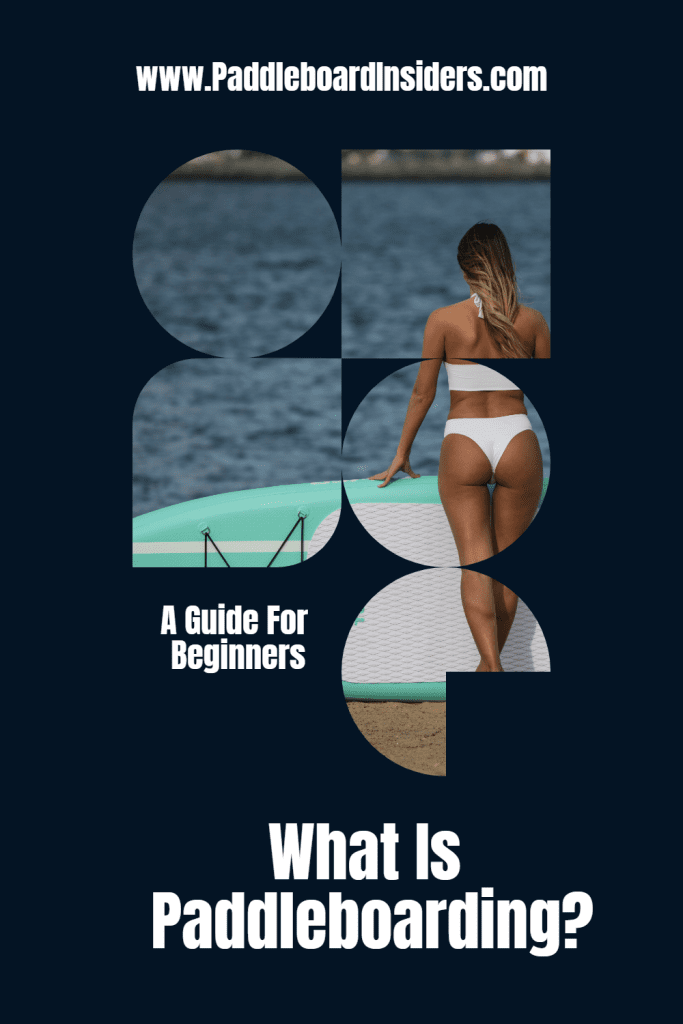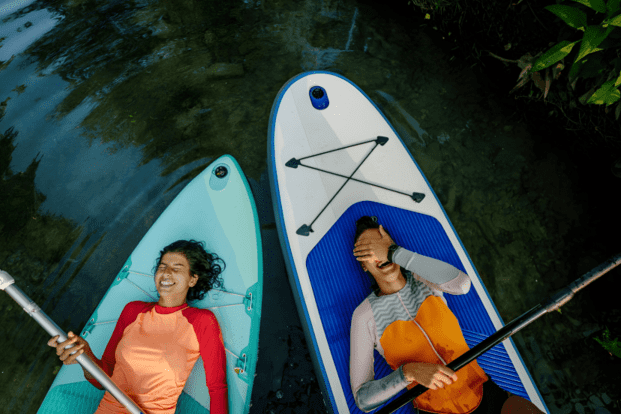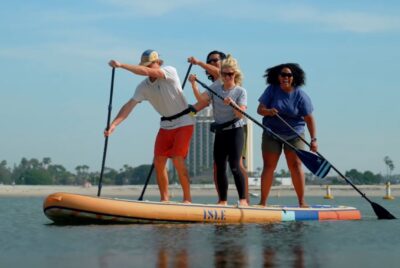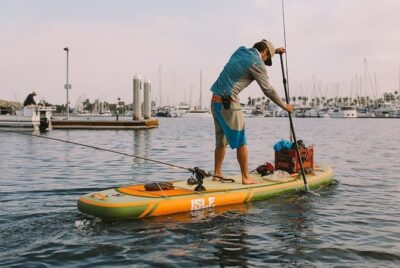What Is Paddle Boarding? A Quick Start Guide for Beginners
*We may earn a commission for purchases made using our links. Please see our disclosure to learn more.
What is paddle boarding? This is a common question that I get asked all the time when I talk about it.
Paddleboarding, also known as stand-up paddleboarding (SUP), is a thrilling activity that involves standing on a specially designed board and propelling yourself through the water using a paddle. It offers a unique blend of adventure, fitness, and tranquility.
SUP’ing can be enjoyed on various bodies of water, including lakes, rivers, and oceans. The equipment required for paddleboarding consists of a paddle, a board, and a personal flotation device (PFD) for safety. The boards used for a SUP are typically longer and wider than traditional surfboards, providing stability and balance.
| Looking for our best paddle board product recommendations? Check the Paddleboard Insiders Buyer Guides |
Table Of Contents
- A Brief History of Paddleboarding
- What’s The Point of Paddleboarding?
- Is Paddle Boarding Difficult?
- What is Paddle Boarding: The Different Types
- Recreational Paddleboarding:
- Touring Paddleboarding:
- Racing Paddleboarding:
- Yoga Paddleboarding:
- Fishing Paddleboarding:
- Whitewater Paddleboarding:
- Surf Paddleboarding:
- The Difference Between SUP and Surf?
- Conclusion
- What Is Paddle Boarding: FAQs
A Brief History of Paddleboarding
Paddleboarding has a rich history that spans centuries. Its origins can be traced back to ancient cultures such as Polynesians, who used similar boards for transportation and fishing. In the 20th century, paddleboarding gained popularity among beachgoers as a way to enjoy the water without the need for waves.
In recent decades, SUP’ing has experienced a resurgence in popularity. It has become a beloved recreational activity and a booming industry. Paddleboarding races, festivals, and group excursions have emerged worldwide, fostering a vibrant community of paddleboarders.
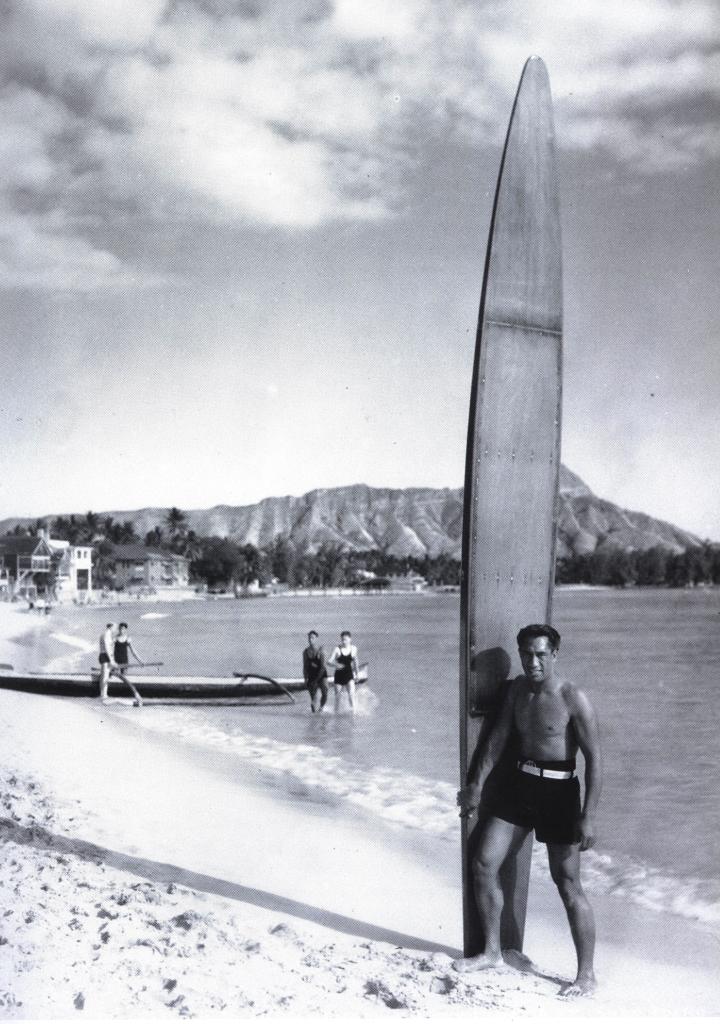
What’s The Point of Paddleboarding?
You might be wondering, what’s the appeal of this sport? Well, there are numerous reasons why people are drawn to this water activity.
Firstly, SUP’ing offers an excellent full-body workout. By engaging your core muscles to maintain balance and using your arms and legs to paddle, you’ll strengthen your body while enjoying the beauty of nature. It is also an incredible workout because when you engage all your muscles you are burning so many calories.
Additionally, paddleboarding provides a unique connection with nature. As you glide across the water, you’ll have a special vantage point to observe marine life, birds soaring overhead, and stunning landscapes. This immersion in nature can be both therapeutic and awe-inspiring, allowing you to escape the stresses of everyday life and feel happier.
Is Paddle Boarding Difficult?
Many people assume that paddleboarding is extremely challenging to get started on, but it doesn’t have to be! Like anything it takes some time to find your legs but because the board is so much wider that traditional surfboards, it becomes significantly easier to stand on it.
Once you’ve mastered the art of balancing and the basic paddle strokes, you’ve already gained enough skills to have a fantastic time on the water. So, don’t hesitate to give paddleboarding a try! And if you’re an experienced SUP rider, why not invite a friend who is new to it to join you? With your guidance and support, they’ll quickly find their stride and start looking like seasoned pros in no time!
What is Paddle Boarding: The Different Types
Paddleboarding offers versatility and a range of activities to suit different interests and preferences. Here are some popular types of SUP activities that you can explore:
Recreational Paddleboarding:
This is the most common form of SUP’ing, where individuals paddle on calm waters for leisure and enjoyment. It’s perfect for taking in the scenic beauty, exploring lakes or gentle rivers, and spending quality time with friends and family.
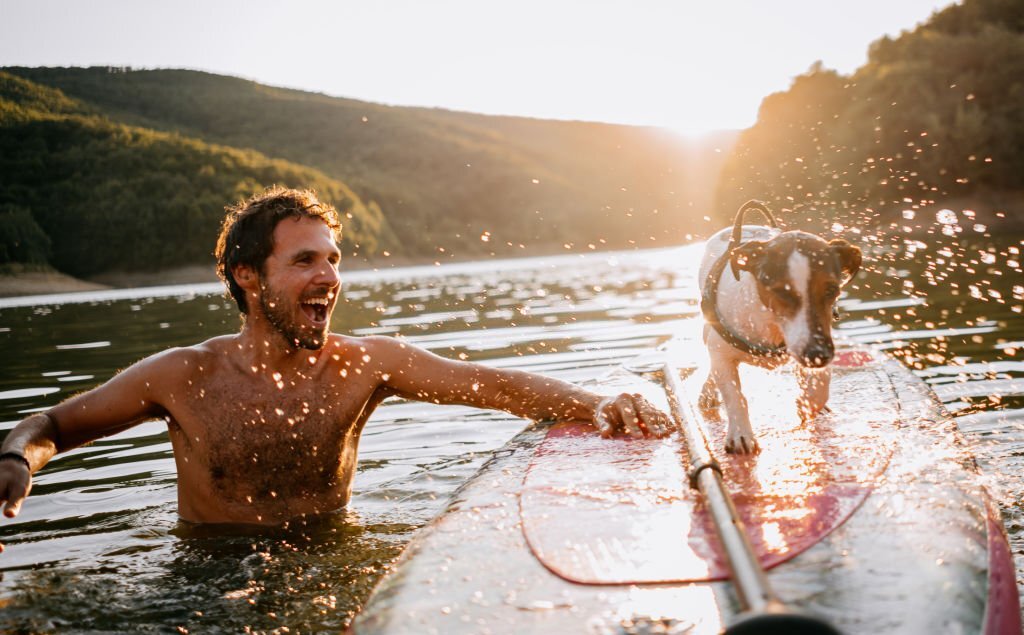
Touring Paddleboarding:
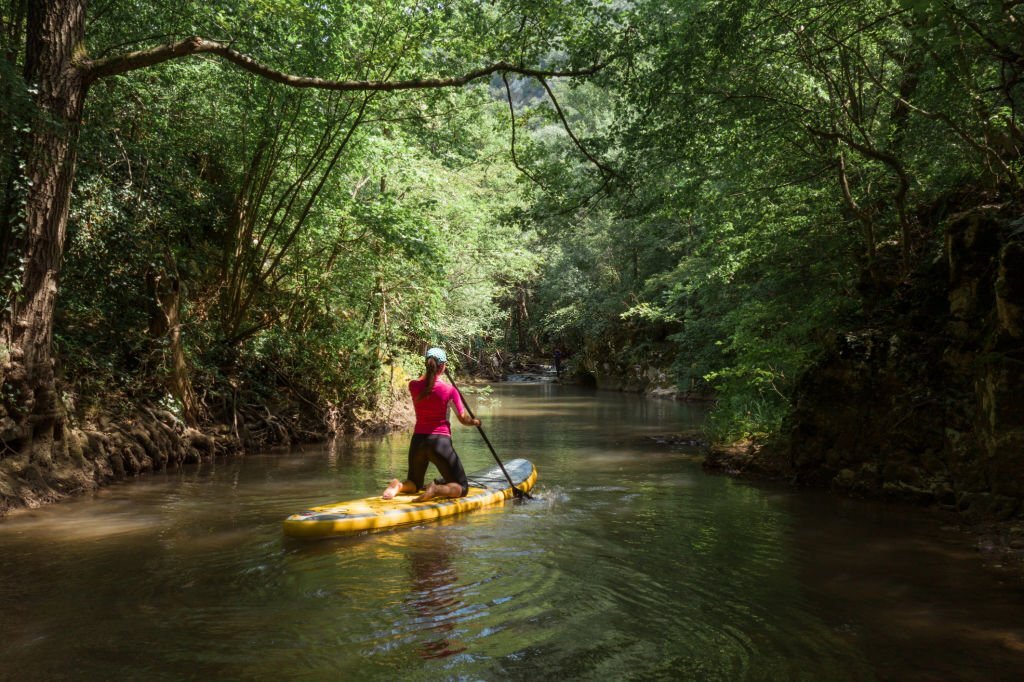
Touring paddleboarding involves embarking on longer journeys and exploring larger bodies of water. It often includes paddling for extended periods, covering greater distances, and discovering new locations. Touring paddleboards are designed for efficiency, stability, and carrying gear if needed.
Racing Paddleboarding:
For those seeking a competitive edge, racing paddleboarding offers exhilarating experiences. Paddleboard races range from short sprints to long-distance endurance challenges. Participating in races allows you to test your skills, speed, and stamina while enjoying the camaraderie of fellow paddleboarders.
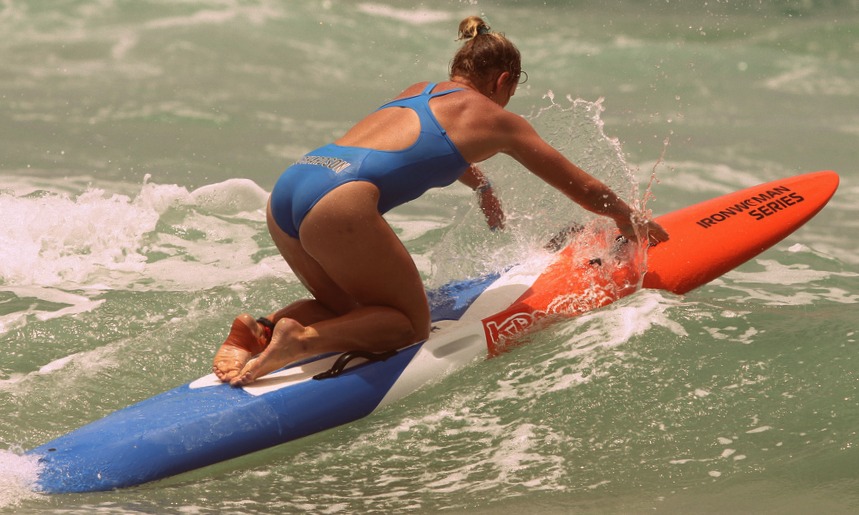
Yoga Paddleboarding:
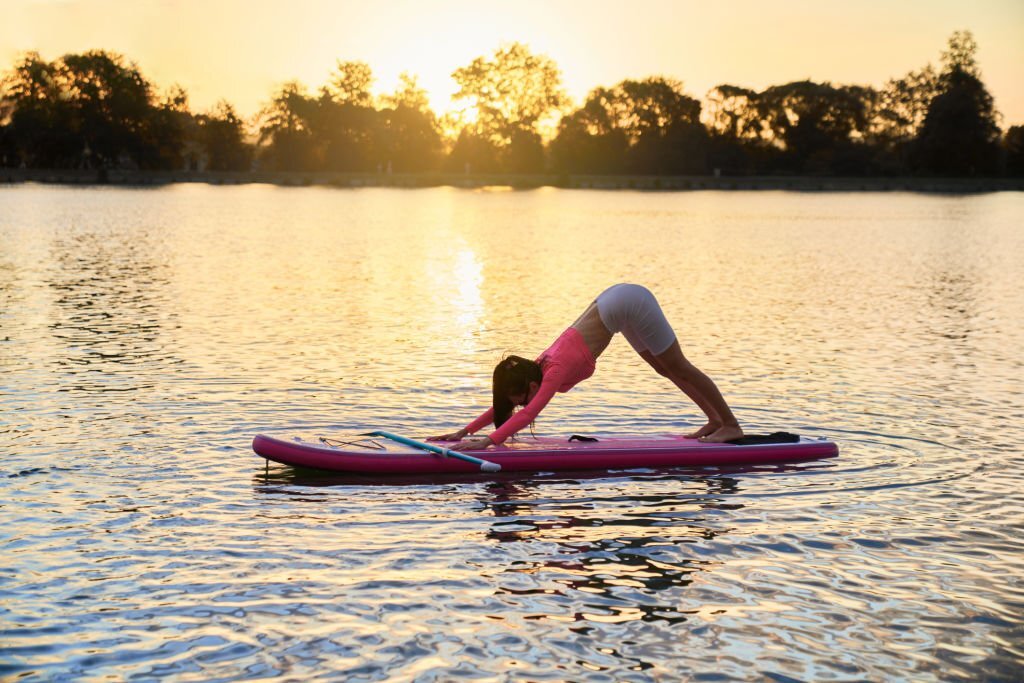
Combining the tranquility of yoga with the serenity of paddleboarding, SUP yoga has gained popularity in recent years. Practicing yoga poses on a paddleboard challenges your balance, core strength, and focus. It’s a unique way to enhance your yoga practice while enjoying the gentle movement of the water.
Fishing Paddleboarding:
Paddleboards designed specifically for fishing offer a stable platform to access areas that might be difficult to reach by boat. Anglers can paddle to their preferred fishing spots, cast their lines, and enjoy the peacefulness of the water while waiting for a catch. Fishing paddleboards often have additional features like rod holders and storage compartments.

Whitewater Paddleboarding:
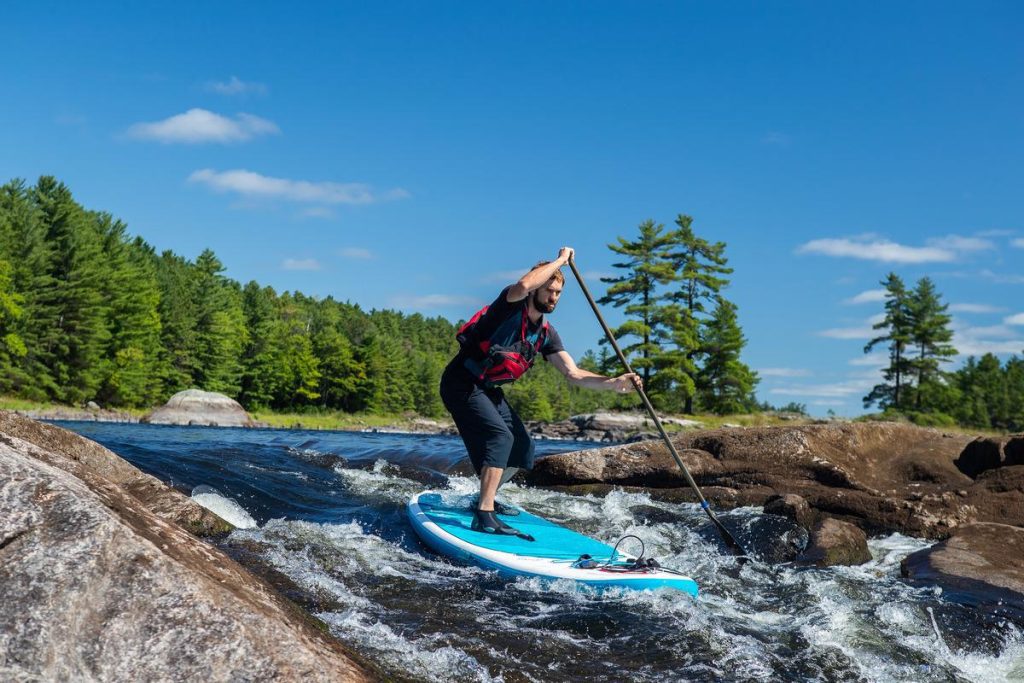
For the adventurous souls, whitewater paddleboarding combines the excitement of paddleboarding with the adrenaline rush of navigating fast-flowing rivers and rapids. It requires advanced skills, experience, and specialized equipment to maneuver through turbulent waters. Proper training and safety precautions are crucial for this challenging form of paddleboarding.
Surf Paddleboarding:
While paddleboarding and surfing are distinct activities, some paddleboarders enjoy catching small waves and riding them using paddleboarding techniques. Surf paddleboarding requires a good understanding of surf conditions, wave selection, and paddle technique to maintain balance and catch waves successfully.
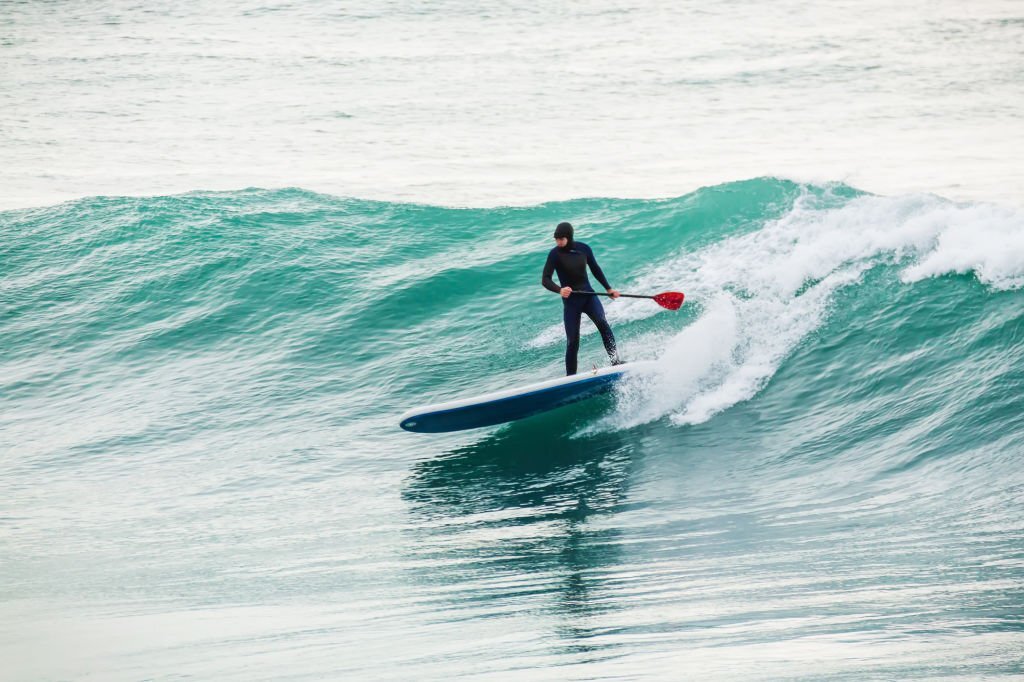
Remember, each type of paddleboarding has its own set of requirements and techniques. Always prioritize safety, choose the right equipment for the activity, and be mindful of your skill level and comfort zone. Whether you prefer the calmness of recreational paddleboarding or the thrill of racing or surfing, there’s a paddleboarding style for everyone to enjoy.
So you can probably see that it’s not so easy to answer the question – “what is paddle boarding?”
The Difference Between SUP and Surf?
While paddleboarding and surfing share similarities, they are distinct activities. Surfing involves riding ocean waves using a surfboard, whereas paddleboarding is about exploring and paddling on flat water surfaces. In surfing, the primary goal is to catch and ride waves, while paddleboarding focuses more on cruising, touring, and fitness.
Another key difference lies in the equipment used. Paddleboards are larger and more stable than surfboards, allowing paddlers to stand upright and paddle using a longer paddle. This stability makes paddleboarding more accessible to beginners and provides a platform for various activities such as yoga, fishing, and even racing.
Surfing requires advanced skills to navigate and ride waves effectively, whereas paddleboarding can be enjoyed by individuals of all skill levels. Both sports have their unique charms and challenges, offering different experiences to water enthusiasts.
First-Time Paddleboarding Tips:
If you’re a beginner eager to try paddleboarding, here are some essential tips to ensure a successful first-time experience.
1 – Choose a calm and flat water location for your maiden voyage – This will make it easier to maintain balance and build confidence. Lakes and slow-moving rivers are ideal options.
You can use this detailed interactive guide to find a flat water location near you.
2 – Safety should always be a priority – Wearing a PFD is crucial. Additionally, consider investing in a leash that attaches you to the board, preventing it from drifting away in case of a fall.
My Recommendation = Onyx MoveVent Life Vest
Where To Buy: Amazon
Why I Love It:
– Designed so that it doesn’t obstruct your paddling because it leaves the shoulders open
– Highly visible so that you can be seen by other watercraft even in low light conditions
– Heavy duty and will keep even the heaviest people afloat.
– Also includes a whistle for extra safety

4 – It’s also advisable to paddle with a buddy, especially if you’re new to the sport – This will not only be more fun, but it will also keep you safe.
5 – Relax – Even the most skilled paddle boarders were beginners at some point, so just give yourself permission to be new at it and have fun as you learn.
How to get going on your SUP
Now that you’re familiar with the basics, let’s delve into a step-by-step guide to help you get started on your stand-up paddleboarding journey.
Find a suitable location:
Choose a calm body of water with easy access and minimal boat traffic. Familiarize yourself with any local regulations or permits required.
Prepare your equipment:
Ensure your paddleboard is in good condition, properly inflated, and the fin is securely attached. Dress appropriately for the weather, wearing lightweight and quick-drying clothing.
| Looking for more accessories for your paddle board? The 23 Best Paddleboard Accessories That You Need In 2024 |
Enter the water:
Carefully carry your board into the water, making sure the fin is clear of any obstacles. Step onto the board from knee-deep water, maintaining balance as you position yourself in the center.
Find your balance:
Start in a kneeling position, getting comfortable on the board. Gradually transition to a standing position, placing your feet parallel and shoulder-width apart. Keep your knees slightly bent to absorb any small waves or movements.
Paddle technique:
Hold the paddle with one hand on the handle and the other hand slightly above the blade. To paddle forward, reach forward with the blade, immerse it fully, and pull it backward alongside the board. Alternate sides for each stroke, engaging your core muscles for stability.
Maneuvering:
To turn, paddle more on one side than the other, using a sweeping motion. To stop or slow down, simply drag the paddle in the water behind you. Experiment with different strokes and maneuvers to enhance your control and agility on the water.
Remember, practice makes perfect. The more you paddle, the more comfortable and skilled you’ll become on your SUP.
Conclusion
What is paddling boarding? Paddle boarding is an exhilarating water sport that offers a blend of adventure, fitness, and relaxation. It allows you to explore beautiful waterways, engage with nature, and improve your overall well-being. Whether you’re seeking an adrenaline rush or a peaceful retreat, paddleboarding has something to offer everyone.
So, why not grab a paddle, find a serene spot, and embark on your own SUP adventure? Discover the joy of gliding across the water, feeling the sun on your face, and embracing the freedom that comes with this incredible activity.
And remember – next time someone asks you “what is paddle boarding?”, you know exactly what to say 😉
| Looking for insider guides to some amazing paddle boarding locations? Check the Paddleboard Insiders Location Guides |
What Is Paddle Boarding: FAQs
Is paddleboarding suitable for beginners?
Absolutely! Paddleboarding is accessible to individuals of all skill levels. Beginners can start on calm waters and gradually build their skills and confidence.
Do I need to be a good swimmer to SUP?
While it’s always advisable to be a competent swimmer, wearing a PFD ensures safety and buoyancy in case of any mishaps.
Can I go paddleboarding alone?
Paddleboarding alone is possible, but it’s generally recommended to go with a buddy, especially for beginners. Having someone with you adds an extra layer of safety and enjoyment.
Can I practice yoga on a paddleboard?
Yes, many people practice yoga on paddleboards, known as SUP yoga. It offers a unique and challenging way to connect with your body and nature simultaneously.
How do I transport a paddleboard?
There are various options for transporting a paddleboard, including using roof racks, inflatable paddleboards that can be easily stored and transported, or specialized paddleboard trailers. Choose the method that best suits your needs and equipment.
